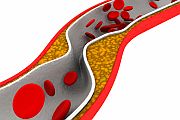Many patients immobile or dead a year later, but some benefit
MONDAY, April 6, 2015 (HealthDay News) — Lower extremity revascularization in frail nursing home residents rarely improves their ambulatory status, according to a study published online April 6 in JAMA Internal Medicine.
Emily Finlayson, M.D., director of the University of California San Francisco Center for Surgery in Older Adults, and colleagues conducted a review of Medicare claims data which revealed that 10,784 long-term nursing home residents had undergone the procedure between 2005 and 2009. Their average age was 82, and many were in very poor health. Three out of four could not walk, and 40 percent had experienced a decline in their overall physical function. In addition, 60 percent had cognitive impairment, 57 percent had congestive heart failure, and 29 percent had renal failure.
A year after surgery, half of the patients had died. Among 7,188 patients unable to walk prior to surgery, 89 percent either died or remained nonambulatory. Of 1,672 nursing home residents who could walk beforehand, 63 percent had died or lost the ability to walk within a year.
“Many patients do not ever get back to their baseline function, regardless of what kind of procedure they have,” Finlayson told HealthDay. The cost varies across the nation, but these patients tend to have high complication rates that drive up the total cost of care, Finlayson added. However, Finlayson said her findings should not be used to declare the surgery wasteful and useless. She likened the procedure to repairing a broken hip. “We know if it’s not fixed, it causes excruciating pain and increasing disability. The goals of surgery are sometimes to prolong life, but sometimes they’re to ease symptoms and ease suffering,” she explained.
Copyright © 2015 HealthDay. All rights reserved.








